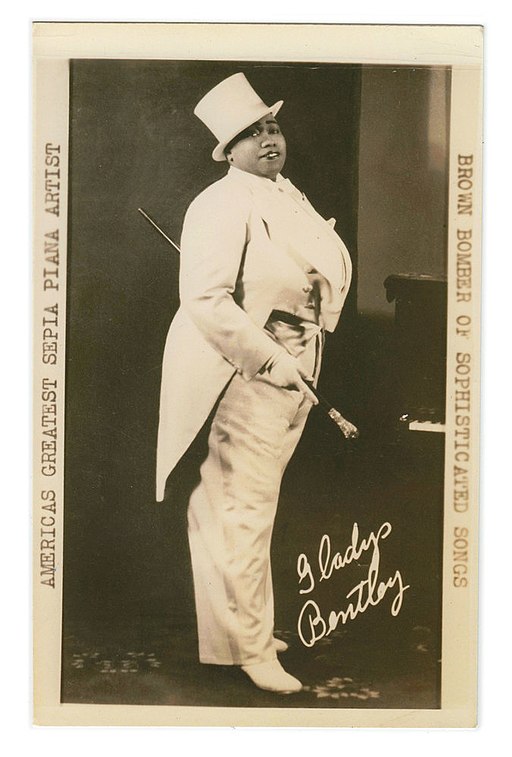
Source: Wikimedia Commons / Collection of the Smithsonian National Museum of African American History and Culture via New York Times
The Icons is a four-part series through which we will explore the little-known stories of LGBTQ Black History icons.
Gladys Bentley was born on August 12, 1907, to an American father and a Trinidadian mother. According to San Diego Lesbian, Gay, Bisexual, Transgender News, Bentley reported feeling rejected by her mother at an early age because her mom actually desired a son. She later credited this formative experience for her gender nonconformity, which she began displaying at an early age.
“It seems I was born different. At least, I always thought so….From the time I can remember anything, even as I was toddling, I never wanted a man to touch me…Soon I began to feel more comfortable in boys’ clothes than in dresses,” she told Ebony magazine.
Bentley’s preference for boys’ clothing, which manifested as her stealing her brother’s clothing, and her attraction to her female teachers caused her to become a target of ridicule by her peers. Her preferences also caused her parents to grow concerned. So much so that they took her to a doctor seeking to “cure” her. Overwhelmed and feeling unwanted by her parents, she fled Philadelphia, Penn. for Harlem, New York at the age of 16 where she immersed herself in the jazz scene of the Harlem Rennaisance.
Bentley quickly gained popularity as a pianist and singer as she began performing at rent parties, speakeasies, and nightclubs. She garnered gigs headlining at the popular Harry Hansberry’s Clam House and the Ubangi Club and even toured the country. She was forthright about her sexuality and frequently performed at lesbian bars.
For her performances, Bentley often dressed in her signature tuxedo and top hat and adopted the moniker, Bobbie Minton.
“Gladys Bentley, the way that she presented herself, was usually in a tux, in a top hat – but she also had the makeup,” explained Dwandalyn Reece, curator of music and performing arts at the Smithsonian Institution’s National Museum of African American History and Culture, in an interview with PBS for their Unladylike 2020: Unsung Women Who Changed America series. “She was always playing with identity and presentation and fluidity.”
Bentley’s music was known for its “bold content” — including her cross-dressing preferences and her attraction to women. She also frequently flirted with women on stage during her live performances.
Despite same-sex marriage and interracial marriage being illegal at the time, according to the Queer Cultural Center, she told a gossip columnist that she married a white woman in Atlantic City.
In 1937, Bentley left the Harlem scene and moved to Los Angeles, Calif. However, due to the state’s anti-cross-dressing laws, she faced obstacles when trying to perform in men’s clothing. Worse, she was sometimes banned from performing as a result of her style preferences.
Around this time, the Lavender Scare occurred, through which the government fired hundreds of employees suspected to be gay and lesbian. Eventually, she modified her appearance and gave in to society’s gender norms as far as her attire was concerned. She also appeared in an Ebony magazine cover story titled, “I Am A Woman Again.” In the article, Bentley said that she received hormone treatments administered by a doctor and shared that she married a man.
Bentley also began studying to become a Christian minister. Sadly, she passed away before she accomplished this goal at age 52 due to complications stemming from the flu virus.


